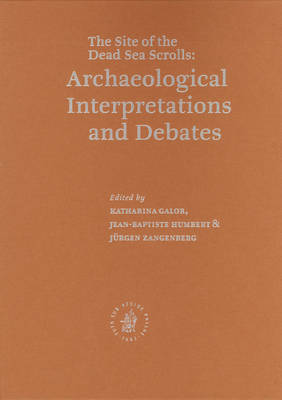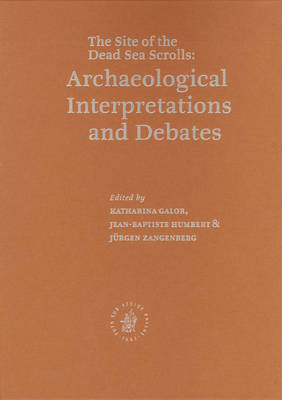
- Afhalen na 1 uur in een winkel met voorraad
- Gratis thuislevering in België vanaf € 30
- Ruim aanbod met 7 miljoen producten
- Afhalen na 1 uur in een winkel met voorraad
- Gratis thuislevering in België vanaf € 30
- Ruim aanbod met 7 miljoen producten
Qumran: The Site of the Dead Sea Scrolls: Archaeological Interpretations and Debates
Proceedings of a Conference Held at Brown University, November 17-19, 2002
Jean-Baptiste Humbert, Jürgen Zangenberg
€ 297,95
+ 595 punten
Omschrijving
Today, archaeology plays an ever growing role in Qumran studies. Fifteen papers presented in 2002 at Brown University provide the necessary data to break new ground in the recent debate about the character of Qumran. Section I discusses material from old and new excavations that help assess the validity of the traditional Qumran-Essene hypothesis. Part II discusses various aspects of the main settlement such as division of space, the character of period III, the date of the cave scroll deposits and the use of food. Part III deals with the Qumran cemetery and a similar graveyard at Khirbet Qazone.
Part IV places Qumran into a wider regional context, concentrating on local agriculture and ceramic production. The articles strongly call for a new awareness for archaeological detail and, in their various ways, instigate a renewed debate about how to bring texts and material culture into a meaningful dialogue.
Part IV places Qumran into a wider regional context, concentrating on local agriculture and ceramic production. The articles strongly call for a new awareness for archaeological detail and, in their various ways, instigate a renewed debate about how to bring texts and material culture into a meaningful dialogue.
Specificaties
Betrokkenen
- Auteur(s):
- Uitgeverij:
Inhoud
- Aantal bladzijden:
- 308
- Taal:
- Engels
- Reeks:
- Reeksnummer:
- nr. 57
Eigenschappen
- Productcode (EAN):
- 9789004145047
- Verschijningsdatum:
- 23/03/2006
- Uitvoering:
- Hardcover
- Formaat:
- Genaaid
- Afmetingen:
- 221 mm x 292 mm
- Gewicht:
- 1424 g

Alleen bij Standaard Boekhandel
+ 595 punten op je klantenkaart van Standaard Boekhandel
Beoordelingen
We publiceren alleen reviews die voldoen aan de voorwaarden voor reviews. Bekijk onze voorwaarden voor reviews.










